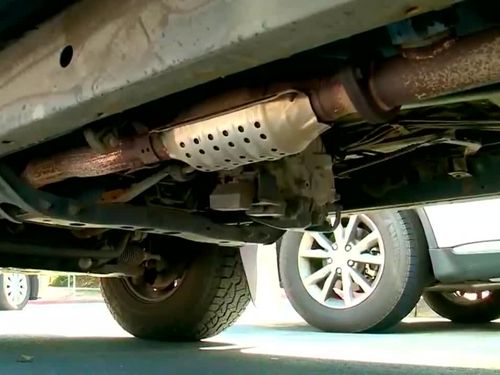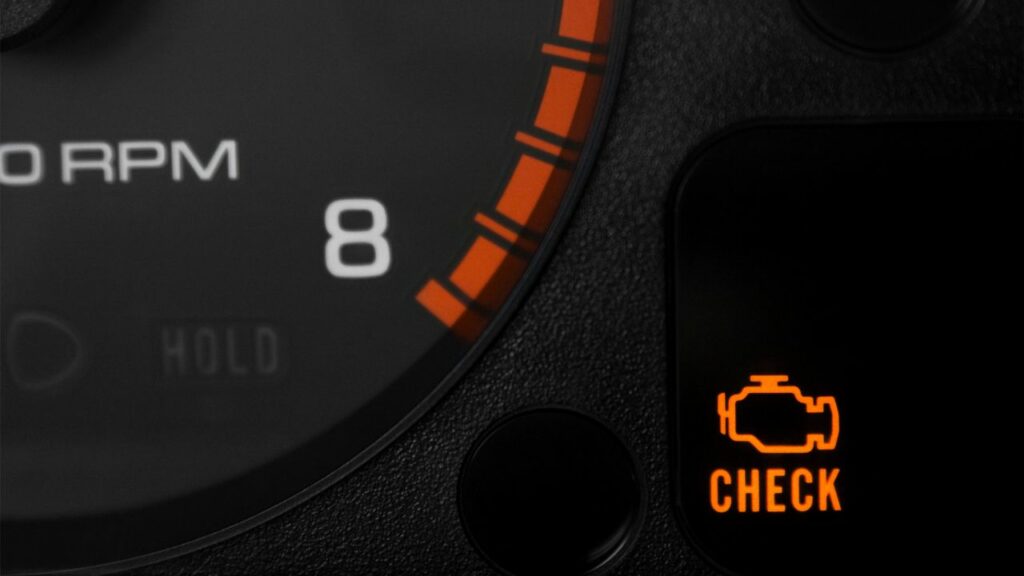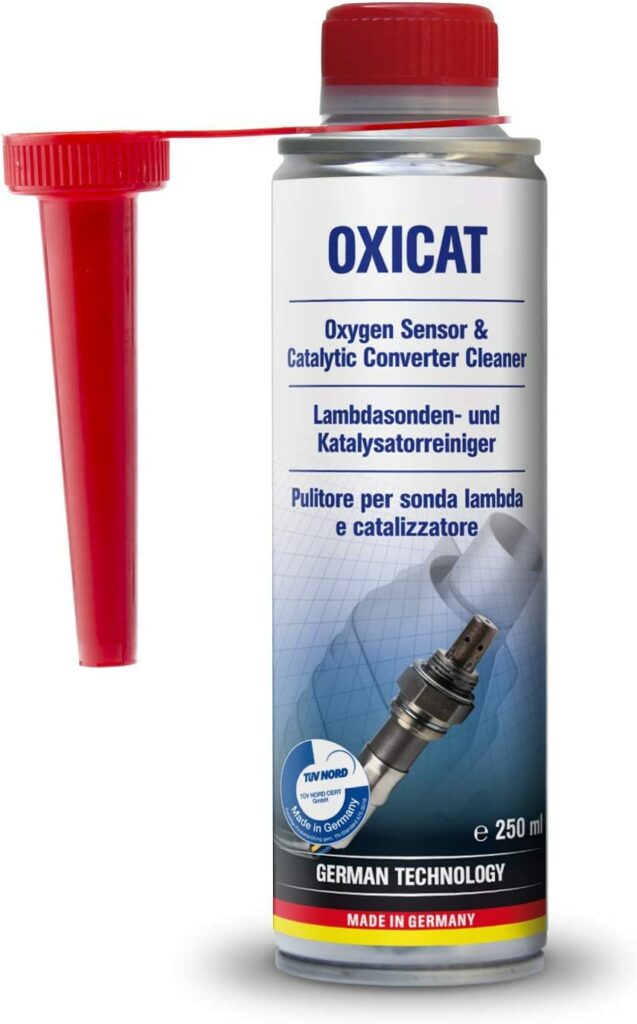If you’re noticing poor acceleration, reduced gas mileage, or a generally low performance from your car, it might be time to check the catalytic converter.
This part of the exhaust system is essential for reducing emissions, but it can also be one of the most expensive parts to replace.
Fortunately, there are a few things you can do to clean and fix your catalytic converter without completely replacing it.
In this article, I’ll cover how to fix a catalytic converter without replacing it, symptoms your catalytic converter can be fixed, how to clean a catalytic converter without removing it, and some tips that’ll make your catalytic converter last longer.

Table of Contents
- Can You Fix A Catalytic Converter Without Replacing?
- Symptoms You Can Fix Catalytic Converter Without Replacing
- Symptoms You Need To Replace Your Catalytic Converter
- How to Fix A Catalytic Converter Without Replacing
- How to Clean a Catalytic Converter Without Removing It
- How To Make Your Catalytic Converter Last Longer
- Frequently Asked Questions
- Can a catalytic converter repair itself?
- Can you clean a catalytic converter instead of replacing it?
- Can a catalytic converter be unclogged?
- What happens if I don’t fix my catalytic converter?
- Can I drive with a bad catalytic converter?
- What does a clogged catalytic converter sound like?
- What are the 3 most leading failures of a catalytic converter?
- Conclusion
Can You Fix A Catalytic Converter Without Replacing?
Yes, fixing a catalytic converter without replacing it is possible, but it really depends on the severity of the problem.
If your catalytic converter is clogged due to aging or dirty, then you might be able to clean it and get a few more years out of it.
However, if the damage to your catalytic converter is severe (rotten smell, rattling, discoloring) then you’ll likely need to replace the catalytic converter.
So, before we discuss how to fix a catalytic converter without replacing it, let’s first go through the symptoms that indicate whether or not your catalytic converter needs to be replaced.
Symptoms You Can Fix Catalytic Converter Without Replacing
There are a few key symptoms that’ll help you determine whether you can fix your catalytic converter without replacing it:
Poor acceleration or sluggish start
If your catalytic converter is clogged or dirty, it’ll restrict the exhaust flow and cause poor acceleration. You may also face a sluggish start or your car will be hard to start at times.
If this is the only symptom you’re experiencing, then there’s a good chance you can fix your catalytic converter without replacing it.
Car’s performance is low
If you drive your car regularly, it’d be pretty obvious to notice a sudden drop in performance.
If your car used to zip around town effortlessly and now feels like it’s dragging its feet, then it might be time to check your catalytic converter.
One of the main functions of the catalytic converter is to convert the harmful emissions from the engine into less harmful gases.
If the converter itself is damaged, it’ll be less effective at performing this crucial task. As a result, your car’s performance will suffer as the engine won’t be able to breathe properly.
Reduced gas mileage
Next, if you’re noticing a sudden drop in gas mileage, it’s most likely due to a clogged catalytic converter.
The reduced exhaust flow will cause your engine to work harder to compensate for the energy loss, which will lead to more fuel being consumed.
Check engine light is on

Most cars will immediately show you a “check engine light” error if there’s anything wrong with the catalytic converter or oxygen sensor.
If you’re noticing this light pop up on your dashboard, it’s a pretty good indication that there’s an issue with your catalytic converter that needs to be addressed.
In some cases, you might be able to reset the light by disconnecting the battery for a few minutes.
Failed emission test
Some states in the US require you to take an emissions test every year or two in order to renew your registration.
If your car fails this test, it’s a pretty good indication that there’s something wrong with the catalytic converter and it needs to be fixed.
Symptoms You Need To Replace Your Catalytic Converter
Now that we know when a catalytic converter can be fixed, let’s go over the symptoms that indicate you need to replace your catalytic converter, and it’s beyond fixing.
Rattling noise
Carefully listening to the sounds your car makes can often be a great way to diagnose problems.
If you’re hearing a rattling noise coming from your catalytic converter, it’s most likely due to the honeycomb inside being damaged or broken.
This damage is usually caused by excessive heat, and once the honeycomb is damaged, it cannot be fixed. Honeycomb is the core of the catalytic converter, and without it, the converter won’t be able to function properly.
Therefore, if you’re hearing this noise, it’s an indication that you need to replace your catalytic converter.
Sulfur or rotten egg smell
Another symptom that is a sure sign you need to replace your catalytic converter is if you’re smelling a rotten egg smell coming from the exhaust.
If your catalytic converter is damaged, it’ll produce a rotten egg smell as a result of the sulfuric gases being emitted.
This smell is caused by the gases coming from the engine, and it’s a sign that the converter is not functioning properly.
If you’re noticing this smell, it’s best to take your car to a mechanic and have them check it out as soon as possible.
Discoloration or warping of the exhaust pipe
If you take a look at your exhaust pipe and notice that it’s discolored or warped, it’s another symptom of a failing catalytic converter.
The excessive heat produced by the engine can cause the converter to overheat and warp the exhaust pipe. In some cases, the paint on the car might even start to bubble as a result of the heat.
If you’re noticing any of these symptoms, it’s best to take your car to a mechanic and have them check it out.
They’ll be able to tell you for sure if your catalytic converter needs to be replaced, or if there’s something else going on with your car.
Smoke coming from the tailpipe

If you see dark smoke coming from the tailpipe, it’s a sign that your catalytic converter is not functioning properly.
The smoke is usually a result of the engine burning oil, and it’s an indication that the converter is not able to convert the harmful gases properly.
In some cases, the smoke might be blue or black, and it’s usually a sign that the converter is completely clogged and it needs to be properly inspected.
How to Fix A Catalytic Converter Without Replacing
In most cases, you’ll be able to fix a catalytic converter by cleaning it with a commercial cleaner.
You can find these cleaners at your local auto parts store, and they’ll usually do a pretty good job at cleaning the converter.
If your converter is completely clogged, you might need to remove it and clean it with a wire brush.
The “Italian Tune-Up”
I know, the name might sound a little weird but bear with me. The Italian tune-up is a common fix for many car problems, including a clogged catalytic converter.
It is not something that car manufacturers “officially” recommend but a lot of people in the automotive community swore by it since it is the easiest & most cost-efficient method to clean out your catalytic converter without even removing it.
The main idea behind the Italian tune-up is to drive your car at high speeds for an extended period of time. This will allow the engine to run at higher temperatures and burn off any deposits that might be clogging the converter.
Most people drive their cars in city traffic which means the engine never gets hot enough to burn off these deposits.
Also, the catalytic converter never gets to work at its most-efficient temperature – between 800 °F (426 °C) and 1,832 °F (1,000 °C) – which leads to more buildup.
By driving on the highway for a few hours with multiple hard accelerations, you’ll be able to clean out your converter and hopefully fix the problem without replacing it.
Use different fuels and fuel additives
If you’re looking for a more long-term solution, you can try using different fuels and fuel additives.
There are many fuels and additives on the market that are designed to clean out your engine and catalytic converter.
Periodically using different fuel or fuel additives can help you avoid clogging your catalytic converter and might even extend its lifespan.
Also, if you typically use a lower octane fuel, try using a higher octane fuel for a while and see if it makes any difference.
The higher octane fuel will burn cleaner and might help prevent deposits from building up in your catalytic converter.
You can find fuel additives at your local auto parts store or nearest gas stations, and they usually come in a bottle that you can add to your gas tank.
These products will help keep your engine and catalytic converter clean, and they can eventually help you fix the problem without replacing the converter.
Vehicle warning light reset
In some cases, the “check engine” light might come on as a result of other car problems such as:
- A bad oxygen sensor
- Fuel trim running too rich or too lean
- Oil or coolant burning
If any of these problems are causing your “check engine” light to come on, fixing them will most likely reset the light.
You can take your car to a local mechanic or dealership and they’ll be able to diagnose the problem and reset the light for you. If you have a scanning tool, you may be able to reset the light yourself.
If the light comes back on, it’s a sign that your catalytic converter is still not functioning properly, and you’ll need to fix it.
Clean your catalytic converter
If the above quick fixes don’t work, you can try to clean your catalytic converter with a commercial cleaner.
Cleaning a catalytic converter means removing the deposits that are clogging it so that it can function properly.
There are two ways you can do it – by removing the catalytic converter or without removing it.
Since most car owners do not want to deal with removing and reinstalling the converter, we’ll focus on how to clean it without removing it.
How to Clean a Catalytic Converter Without Removing It
Total time: 10-15 minutes
Get a catalytic converter cleaner
Catalytic converter cleaners are often a subject of debate since some people swear by them while others claim they don’t work.
However, in my personal experience, I’ve seen that catalytic converter cleaners are one of the easiest ways to clean your converter without removing it.
You can find these cleaners at most auto parts stores or online stores. Make sure to get a cleaner that’s specifically designed for catalytic converters since other engine cleaners might not work as well.
Oxicat Catalytic Converter Cleaner is one of the most popular ones and it works for all types of engines – petrol, diesel, or electric. So, if you don’t want to research further, this is a good option to go with.
Pour the catalytic converter cleaner into the fuel tank
Once you have the cleaner, check the instruction manual and pour the exact amount of converter cleaner into your car’s fuel tank. You can do this by either removing the fuel cap and pouring it in or by using a funnel.
Make sure to use the right amount as specified in the instruction manual since using too much can lead to more problems and too little might not work as well.
Take your car for a drive
After you’ve added the converter cleaner to your fuel, just drive your car like normal. The idea is to let the engine run so that the cleaner can do its job and clean out the deposits in the catalytic converter.
You don’t need to drive for a very long time, but make sure you drive hard at higher RPM (over 3000) with multiple hard accelerations so that the engine reaches its operating temperature. This will help the cleaner work better.
Importantly, keep an eye on the coolant temperature and don’t let it overheat, and follow the speed limit rules to not get any speed tickets.
If you plan to remove your catalytic converter, here’s another way to clean it at home:
How To Make Your Catalytic Converter Last Longer
Once you’ve fixed your catalytic converter, you’ll want to make sure it lasts as long as possible. Here are a few tips on how to do that:
Drive your car regularly
Letting your car sit idle for weeks is the main cause of many car problems – including catalytic converter problems.
Also, short trips are one of the worst things you can do for your car since the engine never reaches its optimum operating temperature. This causes all sorts of problems – including deposits building up in the catalytic converter.
Cars like to be driven regularly so you should try to take them out for a drive at least once a week and drive on highways for at least 20 minutes so that the catalytic converter can work at its optimum temperature.
If you can’t do that, make sure to at least start the engine and let it run for 15-20 minutes so that all the fluids circulate properly.
Keep up with regularly scheduled maintenance
If you want your car – and specifically the catalytic converter – to last a long time, make sure to keep up with regularly scheduled maintenance.
This means changing the engine oil, air filter, and spark plugs according to the schedule in your car’s manual.
A clean engine is a happy engine, and a happy engine means a longer-lasting catalytic converter.
Use higher quality fuel
The quality of the fuel you use also has an impact on the longevity of your catalytic converter.
It’s recommended to use higher octane fuel since it burns cleaner and helps keep the engine clean. This, in turn, helps the catalytic converter last longer.
Since it can get expensive to use high-octane fuel all the time, you should try to use it once in a while and notice if there’s any difference in how your car runs.
Fix check engine light promptly
If the check engine light comes on, make sure to get it fixed as soon as possible.
Oftentimes, the reason the catalytic converter needs to be replaced is because of a problem with the engine that’s been going on for a while.
So, if you ignore the check engine light, it’s likely that the problem will get worse and you’ll end up replacing the catalytic converter which will be expensive.
Frequently Asked Questions
Can a catalytic converter repair itself?
Once a catalytic converter is clogged or damaged, it cannot repair itself. You’ll need to take it to a mechanic or do it yourself to clean or replace it.
Can you clean a catalytic converter instead of replacing it?
Yes, if your catalytic converter is giving problems due to bad particles buildup, you can clean the catalytic converter instead of replacing it. However, if it’s severely damaged, you might need to replace it.
Can a catalytic converter be unclogged?
Yes, you can unclog a catalytic converter using a catalytic converter cleaner, driving at higher RPMs, and using fuel additives.
What happens if I don’t fix my catalytic converter?
If you don’t fix your catalytic converter, the engine will eventually overheat and may lead to internal damage.
Can I drive with a bad catalytic converter?
You can technically drive with a bad catalytic converter but it’s not recommended. A bad catalytic converter can cause all sorts of problems such as decreased fuel economy, increased emissions, and engine performance issues.
What does a clogged catalytic converter sound like?
A clogged catalytic converter can cause the engine to sound like it’s misfiring or have a rattling noise.
What are the 3 most leading failures of a catalytic converter?
The three most common failures of a catalytic converter are – aging, clogging due to deposits, and physical damage.
Conclusion
A failed catalytic converter can be a big problem, but it doesn’t necessarily mean you need to replace it.
If the problem is due to deposits building up in the converter, you can often fix it by using a catalytic converter cleaner and driving the car for a while.
If you want to prevent your catalytic converter from failing, make sure to keep up with regularly scheduled maintenance and use higher-quality fuel.

Robert Bacon is a car nerd and automotive lover who has dedicated his life to understanding the inner workings of vehicles. He holds a degree in mechanical engineering and has spent years working as a mechanic and engineer for some of the world’s top car companies. In his spare time, he enjoys writing about cars on this blog and tinkering with his 2016 Toyota Mirai in his garage.

Great post, Robert!
I love how you explain the causes and give a short solution below each.
Very useful! Thanks a lot!
And I have a question: How long can I drive with a bad catalytic converter (which has a rotten egg smell)?
Btw, have a good day!
Hi Elena, thanks for the good words. You can technically drive indefinitely with a bad catalytic converter but eventually, it might lead to some engine problems. I’d recommend to keep looking for used catalytic converters for your car and when you find a good deal, get it replaced.
You can read this article for more information – How Long Can You Drive Without a Catalytic Converter
Hi Robert, thanks for your help!
I’ve read your article – How Long Can You Drive Without a Catalytic Converter
It’s exactly the information I was looking for.
That is a wonderful post – so clear and easy to follow.
Once again, thank you Robert!
Hi Robert,
Btw, I had a suggestion for your blog post, and I tried contacting you via the contact page 2 days ago.
Just wondering if you had a chance to take a look at it.
Please share your thoughts.
Have a good day!